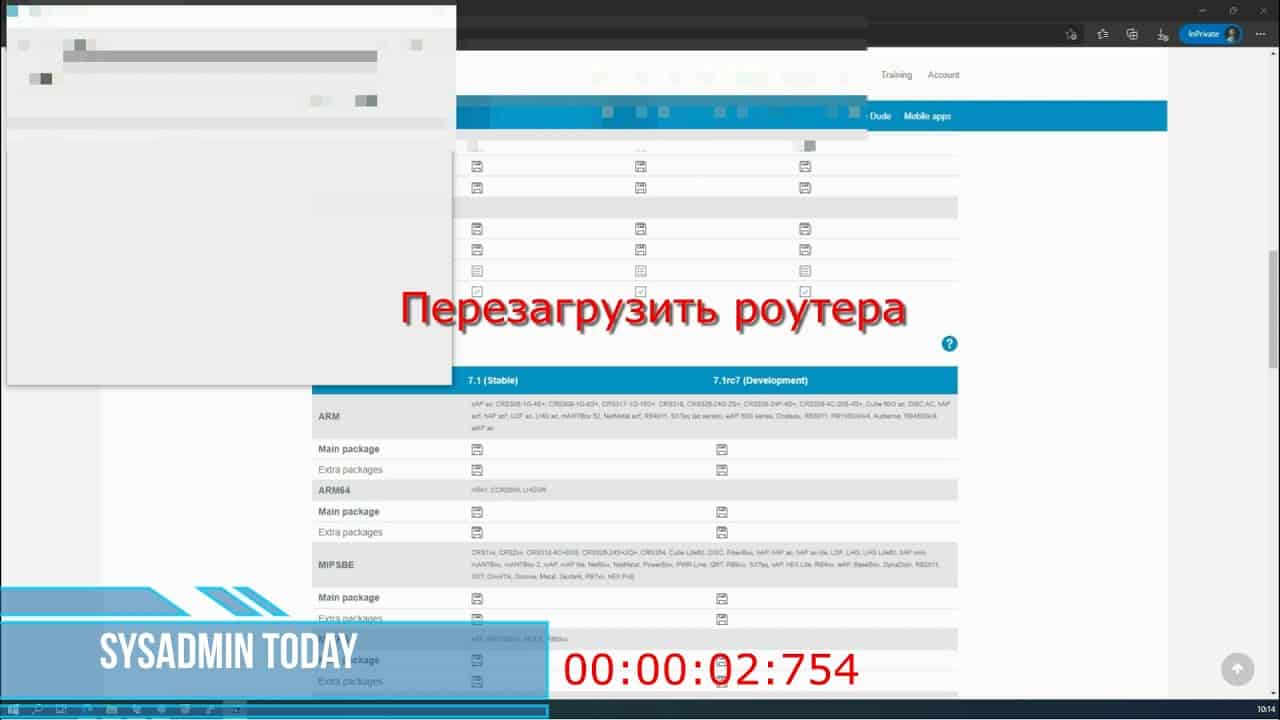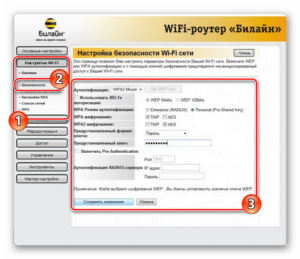Updating Mikrotik is a process that needs to be done regularly. An outdated version of Mikrotik can cause serious problems with your network. For example, security vulnerabilities can only be fixed in newer versions of Mikrotik. In addition, new versions of Mikrotik can provide new features that can improve network performance. If you do not update Mikrotik, you put your network at risk. Hackers can use vulnerabilities in older versions of Mikrotik to gain access to your network. In addition, an outdated Mikrotik may not work stably, which can lead to network failures. Updating Mikrotik may cause problems, such as incompatibility with other devices on the network. Therefore, before updating Mikrotik, you need to back up your settings and check the compatibility of your equipment. Updating Mikrotik is an important process that needs to be done regularly. It can improve network performance and protect it from security vulnerabilities. However, before updating Mikrotik, you need to check the compatibility of your equipment and back up your settings to avoid possible problems.
How to check the current version of Mikrotik
Before updating Mikrotik, you need to make sure that the current version is an outdated version. To do this you need to follow a few simple steps.
1. Go to the Mikrotik web interface by entering the device’s IP address in the browser’s address bar and logging in.
2. From the top menu, select the 'System' tab.
3. Click on the 'Packages' menu item.
4. In the list of available packages, find the 'System' section.
5. Next to the package name 'routeros' the current version of Mikrotik will be indicated.
This way, you can find out the current version of Mikrotik and compare it with the latest available version on the manufacturer’s official website. If the current version is outdated, you can proceed with the device update procedure.
Updating Mikrotik is one of the important processes that should be carried out regularly. This allows you to fix errors, improve the operation of the device and ensure its security. If you are new to this, then you need to know how to properly prepare for updating Mikrotik.
1. Back up your data. Updating Mikrotik may result in data loss, so before starting the process, you must back up all important data, including settings and configurations.
2. Check compatibility. Before updating Mikrotik, make sure that the new version is compatible with your device. Otherwise, the update may lead to unintended consequences.
3. Prepare the device. Before updating Mikrotik, make sure that the device is fully charged and connected to the power supply. You must also disable all applications and programs that may interrupt the update process.
4. Follow the instructions. Each Mikrotik manufacturer has its own instructions for updating the device. Please read them carefully and follow the instructions to avoid mistakes.
5. Check the result. After the Mikrotik update is completed, check the operation of the device. If everything works correctly, then you have successfully updated Mikrotik.
Updating your Mikrotik is an important process that allows you to improve the performance of your device and ensure its security. Following the recommendations and useful tips, you can successfully prepare for updating your Mikrotik.
Updating Mikrotik may seem like a complicated process for novice users. However, there is a simple and convenient way to update Mikrotik through the web interface. First, you need to log into the Mikrotik web interface using your username and password. Next, go to the 'System' section and select 'Packages'. In this section you will find a list of all installed packages on your Mikrotik.
To update Mikrotik, you need to select the 'routeros' package and click the 'Check For Updates' button. Mikrotik will automatically check for new updates and, if found, offer them for installation.
When you select the option to install the update, Mikrotik will reboot and begin the update process. The update may take several minutes, depending on the speed of your Internet connection and the power of Mikrotik.
Updating Mikrotik via the web interface is a simple and convenient way to update your device. Follow our step-by-step instructions and update Mikrotik without any problems. When updating Mikrotik, many users wonder which settings will remain and which will have to be configured again. In most cases, after the update, all settings that were manually set by the user will be saved. This includes Internet connection settings, wireless network settings, security settings and others. However, if you used third-party plugins or extensions, their settings may not be saved.
It is also necessary to take into account that when updating Mikrotik, the software version may be changed, which may affect the operation of a number of functions and settings. Therefore, after updating, it is recommended to go through all the settings again to make sure that the router is working correctly.
It is important to note that when updating Mikrotik, some default settings may be changed. For example, security settings or wireless network settings may have changed. Therefore, after updating, you need to check all settings and take measures to improve the security of your network.
In general, when updating Mikrotik, all settings that were manually set by the user are saved. However, it is recommended that you go through all the settings again to ensure they are working correctly and take steps to improve the security of your network. Mikrotik update: detailed instructions for beginners
If you are just starting to work with Mikrotik, then you probably encountered the need to update its software. There are several ways to update Mikrotik, but we will consider the simplest and fastest - updating via the command line.
Step 1: Connect to Mikrotik via Telnet or SSH
First, you need to connect to Mikrotik via Telnet or SSH. To do this, you will need the name of your Mikrotik network and an administrator account.
Step 2: Download the update
Next, you need to download the update. There are several ways to download the update, but we will consider the easiest one - downloading via URL. You can find the latest version of the update on the official Mikrotik website.
Step 3: Update Mikrotik
When the update download is complete, you are ready to update Mikrotik. At the command prompt, type '/system package update install' and press Enter. Mikrotik will begin updating and rebooting.
Step 4: Check for update
After restarting Mikrotik, check if the update was installed successfully. At the command prompt, type '/system package update print' and press Enter. You will see a list of all installed packages, and if the update was successful, you will see the new version of the update.
Thus, updating Mikrotik via the command line is not that difficult. Follow these simple instructions and you will update Mikrotik without any problems. Updating Mikrotik via the command line has several advantages. Firstly, it is a faster and more convenient method than updating via the web interface. Secondly, when updating via the command line, you can get more detailed information about the update process and possible errors. Third, command line updating allows you to automate the update process, which can be useful if you have multiple devices that need to be updated.
In order to update Mikrotik via the command line, you need to follow a few simple steps. First, you must connect to Mikrotik via SSH or Telnet. Then, you must upload the new version of Mikrotik to Mikrotik using the 'system upgrade' command. After downloading a new version of Mikrotik, you need to restart Mikrotik for the new version to take effect.
In general, updating Mikrotik via the command line is a more convenient and faster way than updating via the web interface. It also allows you to get more detailed information about the update process and automate the update process, which can be useful if you have multiple devices that need to be updated. When updating Mikrotik, various problems may arise related to settings and hardware compatibility. However, in most cases, these problems can be solved independently, without turning to specialists.
One of the most common problems when updating Mikrotik is the loss of settings. Therefore, before updating, you need to make a backup copy of the settings and save it on an external drive.
Another problem may be that the device refuses to update if its version is too old. In this case, you need to update your device in stages, first to a newer version and then to the latest one.
If you have a problem connecting to the Internet while updating Mikrotik, you need to check your network settings and update your network card drivers.
Another common problem when updating Mikrotik is the device refusing to boot after the update. In this case, you can try rebooting the device, and if this does not help, then restore its settings from a backup copy.
To avoid problems when updating Mikrotik, you must carefully study the update instructions and follow them step by step. It is also necessary to check the compatibility of the equipment before updating and make sure that all the necessary drivers and software are installed on the computer.
What to do if the Mikrotik update failed
When updating Mikrotik, a situation may arise where the update failed. Don't panic, because there are several ways to solve this problem.
1. Try updating Mikrotik again. Sometimes the update may not work the first time due to a glitch in the process.
2. Check if there is enough free space on Mikrotik for the update. If there is not enough space, remove unnecessary files or programs.
3. Check if you have selected the correct update version for your Mikrotik. If the wrong version is selected, the update will not be able to install.
4. If all of the above methods did not help, try updating Mikrotik via the command line. To do this, you can use the 'system routerboard upgrade' command in a terminal (Winbox or SSH).
By following these tips, you can successfully update your Mikrotik and continue using it without problems.
Read further:






